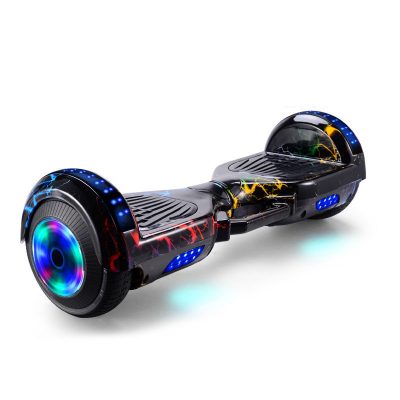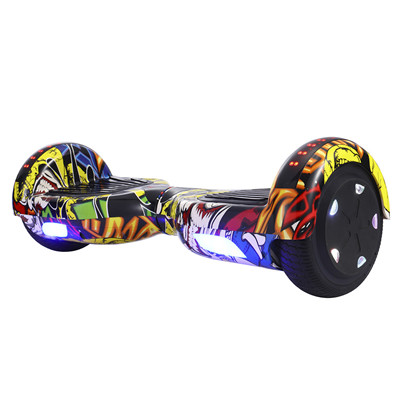Hoverboards, also known as self-balancing scooters, are personal transportation devices that gained significant attention and popularity in the early 2010s. Despite their name, true hoverboards, as depicted in science fiction, which float above the ground without wheels or physical contact, do not currently exist. The term “hoverboard” is used colloquially to refer to the self-balancing electric scooters that have two wheels and a platform for the rider to stand on.
Here are the key features of these self-balancing scooters:
- Self-Balancing Technology: Hoverboards use gyroscopic sensors and accelerometers to detect the rider’s movements and maintain balance. This technology allows riders to control the direction and speed of the hoverboard by shifting their weight.
- Electric Propulsion: Hoverboards are powered by electric motors that drive the wheels. The rider controls the speed by leaning forward or backward, and steering is achieved by shifting weight to either side.
- Compact and Portable: Hoverboards are designed to be compact and portable. They are lightweight and can be easily carried or stored when not in use.
- Rechargeable Batteries: Hoverboards are powered by rechargeable lithium-ion batteries. The battery life varies depending on the model and usage but typically provides a range of several miles on a single charge.
- Charging Time: Charging times can vary, but most hoverboards take a few hours to fully recharge their batteries.
- LED Lights: Many hoverboards feature LED lights on the front, back, or sides. These lights serve both functional and aesthetic purposes, making the hoverboard more visible at night and giving it a futuristic appearance.
- Bluetooth Connectivity and Speakers: Some hoverboards come equipped with Bluetooth connectivity and built-in speakers, allowing riders to play music from their smartphones or other devices.
- App Integration: Certain hoverboards can be connected to smartphone apps that provide additional features like tracking speed, distance, and battery life. These apps may also allow users to customize settings and receive firmware updates.
- Safety Features: To enhance safety, modern hoverboards often include features like non-slip foot pads, fender bumpers, and systems that prevent overcharging or overheating of the battery.
It’s important to note that the popularity of hoverboards was accompanied by concerns over safety due to reports of battery-related fires and issues with cheaply manufactured models. As a result, safety standards were developed to regulate the production and sale of hoverboards in various countries. When purchasing a hoverboard, it’s recommended to choose a reputable brand that adheres to these safety standards to ensure a safe and enjoyable riding experience.





























